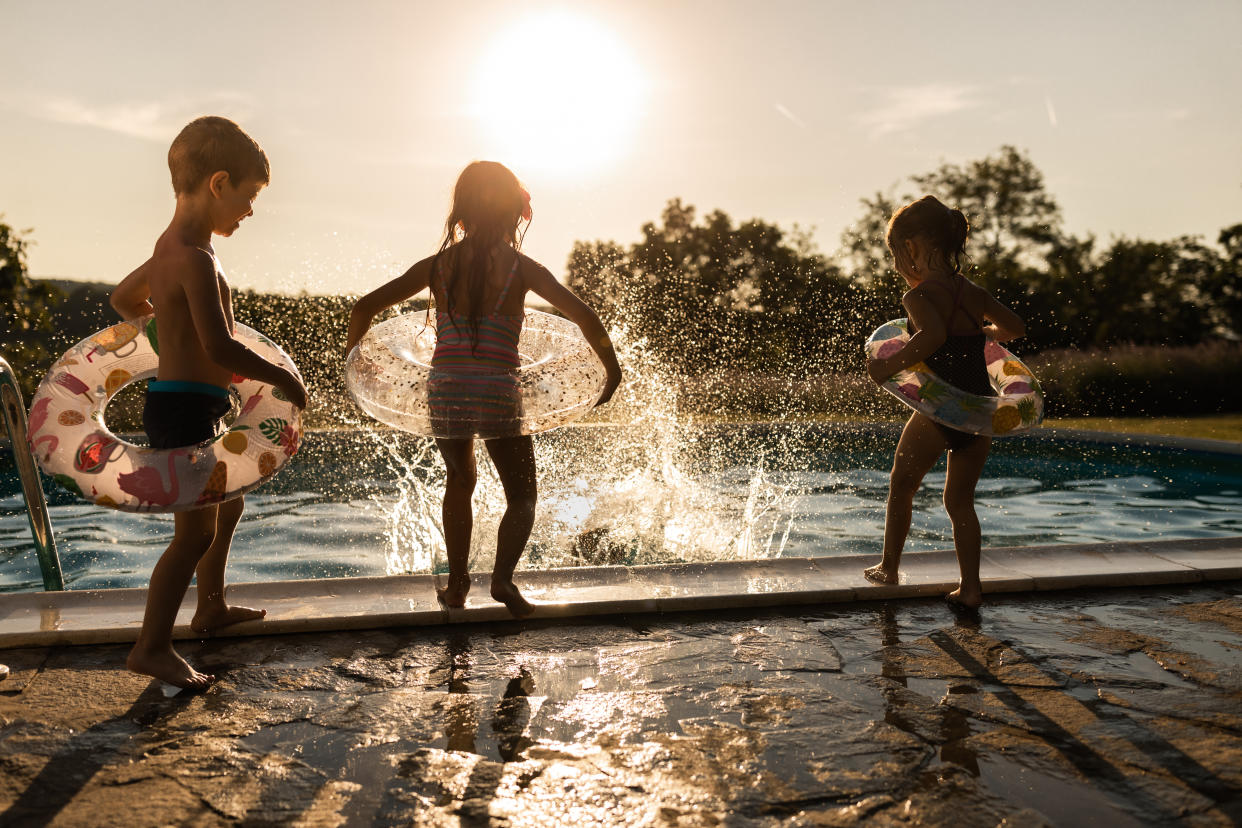'Dry drowning' isn't a real medical term. Using it is fearmongering, doctors say.

Drowning is the leading cause of death for kids ages 1 to 4. It’s something many parents fear happening. But one particular term — which went viral in 2017 after a 4-year-old boy died one week after swimming — seems to surface every summer and has caused a lot of confusion: so-called dry drowning.
“Dry drowning” isn’t a legitimate medical term, but warnings about it are all over the internet and social media, including TikTok. I’m a mom of four who got an onslaught of warnings from fellow parents about dry drowning when I first moved to my coastal town. But doctors say this is fearmongering. So what is dry drowning and why are so many in the medical community frustrated by the term? Here’s what you need to know.
What is dry drowning?
Most people use the term to talk about a child who had an incident in the water, such as being submerged and inhaling water, and seemed fine after, “only to develop difficulty breathing, respiratory failure or even death sometime later,” Dr. Christopher San Miguel, emergency medicine physician at the Ohio State University Wexner Medical Center, tells Yahoo Life.
Dr. Marla Levine, associate professor of pediatrics at Monroe Carell Jr. Children’s Hospital at Vanderbilt University Medical Center, tells Yahoo Life that she first heard about dry drowning on a TV show. “It’s not medical,” she says.
“It is a term that was sensationalized by news outlets when a young child died unexpectedly one week after playing in water,” Dr. Rohit Shenoi, professor of pediatrics - emergency medicine at Baylor and Texas Children’s Hospital, tells Yahoo Life. “The child actually died of an unrelated medical condition.”
Levine says she’s heard from parents concerned about dry drowning in the ER after their child had an incident in the water. Children can breathe in a lot of water if they’re submerged, but Levine says that they would usually have symptoms that got progressively worse afterward. “The child wouldn’t be completely asymptomatic, continue playing and be completely fine before developing a big event in the lungs,” she says.
Why is the term ‘dry drowning’ wrong?
Drowning is when someone has respiratory trouble from being submerged in water, Shenoi explains. It’s generally lumped into two major categories — fatal and nonfatal, meaning someone died from drowning or survived. “Symptoms usually begin shortly after the event, and invariably within eight hours of drowning,” Shenoi says.
Symptoms can include coughing and trouble breathing, he says, and people should seek medical care if they experience that. However, it’s incredibly rare for someone to develop symptoms more than eight hours after a drowning, especially if they seem OK at first, Shenoi says.
There’s also this to consider, notes San Miguel: “By definition, drowning has to involve a liquid — it can’t be dry.” San Miguel stresses that dry drowning is a myth. The idea that people seem fine for days after being submerged and then suddenly develop respiratory failure “simply does not happen,” he says. “The maximum amount of time ever witnessed between the submersion event and the onset of symptoms is eight hours, and even this is quite rare.”
How to lower the risk of drowning
Even though dry drowning is considered a myth, drowning is a very real risk. And water safety is crucial, especially for toddlers, Levine says. “This is the most at-risk, vulnerable population,” she points out.
There are a few things doctors recommend doing to protect children around water:
Watch them closely. “Eyes have to be on your children at all times,” Levine says. That includes when you’re in conversation with someone else. “It takes a moment of a lack of supervision — that’s when tragedy happens,” Levine says.
Teach your child to swim. The American Academy of Pediatrics says that children can start swimming lessons as early as 1 year old.
Fence off your pool. If you own a pool or body of water, San Miguel says it’s crucial to have four-sided fencing with self-closing and latching gates that can isolate your water from the rest of your yard.
Use proper flotation devices. “Identify poor swimmers and utilize life jackets,” San Miguel says. (That doesn’t include water wings.)
If a drowning or suspected drowning occurs, take your child to the ER if they experienced a loss of consciousness, seem confused afterward, required CPR or are still struggling with a cough, shortness of breath or trouble breathing, or chest pain 10 minutes after they were rescued, San Miguel says. And if your child develops unusual behavior, seems wiped out, has a cough, develops shortness of breath or trouble breathing, or has chest pain within eight hours of the drowning, those are also signs you should take them to the ER, he says.


